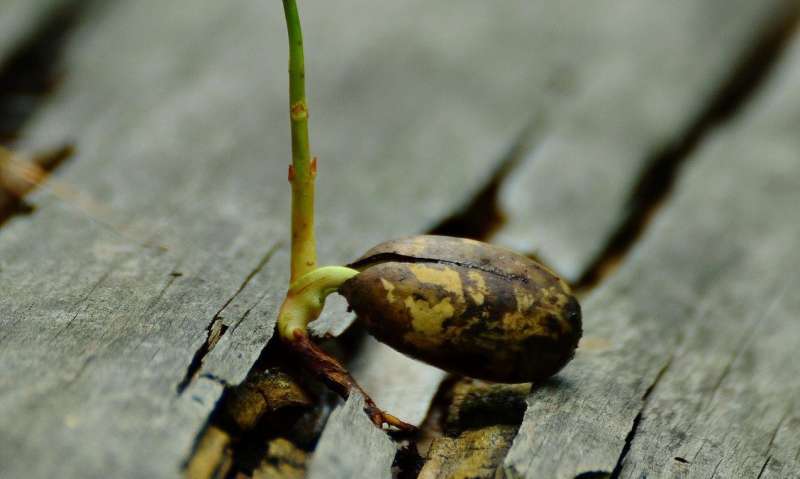Using population genetics, scientists confirm origins of root rot in Michigan ornamentals

Floriculture, the growing of flowering and ornamental plants for gardens and floristry, is an economically important industry in Michigan, which ranks third in the United States for the wholesale value of floriculture products. The health of these crops is threatened by many diseases, including Pythium ultimum, a water mold that infects the roots of popular plants including poinsettia and geranium. The mold results in plant stunting, reduced plant quality, and root and crown rot. Despite educated efforts to improve control of this pathogen, root rot occurs annually for many growers.
To improve management strategies, a team of scientists used population genetics to gain insight into root rot of floriculture crops. They developed a set of small repetitive sections of DNA, known as simple sequence repeats (SSRs), to analyze root rot pathogen populations from various Michigan greenhouses and found that these populations were similar regardless of the plant type, growing season, or location.
There is a continuous exchange of plant materials, such as seedlings and cuttings, among greenhouses throughout Michigan. This study confirmed for the first time that the root rot pathogen is likely moved unnoticed within the state via infected plant material as early symptoms of root rot are easily overlooked. By using SSRs, scientists were able to confirm that the same root rot pathogen populations were responsible for all plants tested over a two-year period.
This research reveals the necessity for new strategies to eradicate this pathogen from greenhouses as current control strategies are not effective and the pathogen has developed a resistance to a popular fungicide. The scientists recommend greenhouse growers focus on improving scouting of all incoming plant material to prevent the root rot from entering their growing environment. On a broader scale, they recommend multi-faceted control strategies to delay or reduce the occurrence of fungicide-resistant populations.
More information: Johanna Del Castillo Múnera et al, Population Structure of Pythium ultimum from Greenhouse Floral Crops in Michigan, Plant Disease (2018). DOI: 10.1094/PDIS-03-18-0394-RE
Provided by American Phytopathological Society



















